As a holistic veterinarian, I find the Black and Tan Coonhound’s eye health a fascinating topic. This breed, known for its keen sense of smell and tracking abilities, also has unique eye structures that can predispose them to certain health issues. As a pet parent, understanding these potential problems can help you keep your Coonhound’s eyes healthy and prevent vision loss.
Our focus today is on the eye health of Black and Tan Coonhounds. We’ll explore common eye issues, preventive measures, and routine care practices. From the importance of a holistic diet rich in Vitamin A and antioxidants to the impact of environmental hygiene, we’ll cover everything you need to know.

Just like humans, dogs can also suffer from various eye diseases, and Black and Tan Coonhounds are no exception. Coonhound Eye Disease, for instance, is a common issue in this breed. But don’t worry, with regular Coonhound Eye Checkups and proper care, most of these conditions can be managed effectively.
So, let’s discuss the world of Black and Tan Coonhound vision care and learn how we can ensure our furry friends enjoy a life full of clear, bright sights!
Understanding Breed Specific Eye Structure
It’s no secret that our beloved Black and Tan Coonhound companions have a unique and charming physical appearance. But did you know that their eyes, in particular, have a distinct structure that sets them apart? Understanding the specifics of their eye structure is crucial in maintaining their eye health and ensuring they lead a happy, active life.
Black and Tan Coonhounds have large, expressive eyes that are typically dark brown and set well apart. Their eyes are almond-shaped and slightly slanted, giving them their characteristic friendly and trusting expression. This breed’s unique eye structure enables them to have a wide range of vision, which is essential for their historical role as hunting dogs. Their eyelids are tight, which helps to protect their eyes from dirt and debris. However, this feature can also make them susceptible to certain eye conditions.
It’s important to keep in mind that the structure of their eyes can predispose them to specific eye health issues. For instance, Black and Tan Coonhounds are prone to developing entropion, a condition where the eyelid rolls inward, causing the eyelashes to rub against the cornea. This can lead to discomfort, corneal ulcers, and even vision loss if not treated promptly.
Another noteworthy aspect is the positioning of their eyes. As their eyes are more exposed, they are at a higher risk of developing eye infections, injuries, and other conditions such as dry eye. Understanding these breed-specific predispositions can help us take proactive measures to protect our Black and Tan Coonhounds’ eye health.
While these issues may sound intimidating, fear not! With regular check-ups, prompt treatment, and a good understanding of their unique eye structure, you can help ensure your Black and Tan Coonhound maintains healthy vision throughout their life. Remember, the key to optimal Black and Tan Coonhound Eye Health lies in understanding their unique eye structure and its implications.
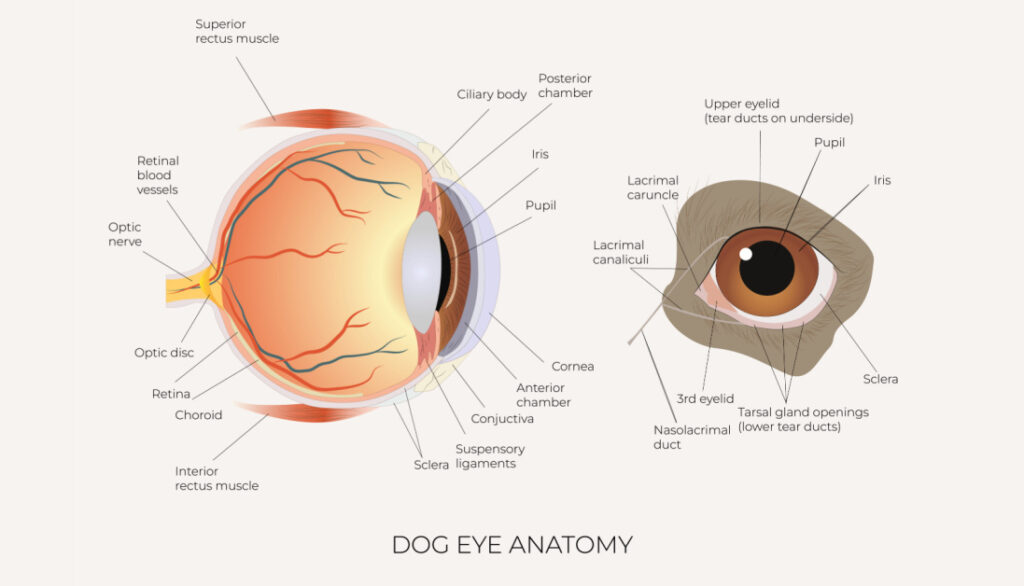
Common Eye Issues In Black and Tan Coonhound
As a veterinarian, I often encounter a variety of eye health issues in the Black and Tan Coonhound breed. Understanding these conditions can help you better care for your furry friend’s eye health. Let’s discuss some of the most common problems we see in this breed.
- Progressive Retinal Atrophy (PRA): This is a group of genetic diseases that cause the retina to degrade over time, leading to vision loss. Early symptoms include night blindness and dilated pupils.
- Cataracts: Just like in humans, cataracts in Black and Tan Coonhounds can cause cloudiness in the lens of the eye, impairing vision. This condition can occur at any age and may progress over time.
- Glaucoma: This is a serious condition where increased pressure in the eye can lead to pain and vision loss. It’s important to catch this early, as it can cause irreversible damage if left untreated.
- Cherry Eye: This condition occurs when the third eyelid’s gland prolapses, leading to a red, swollen appearance that resembles a cherry. It doesn’t typically affect vision, but it can cause discomfort and potential secondary issues.
These are just a few examples of the common Black and Tan Coonhound eye health issues. It’s crucial to remember that early detection is key to managing these conditions. Regular veterinary check-ups and keeping a close eye on any changes in your dog’s eyes can make a significant difference.
Moreover, it’s worth noting that each dog is unique, and not all Black and Tan Coonhounds will experience these issues. Some may have other eye conditions, while others may never have any eye health problems at all. That’s why a personalized approach to your dog’s eye health is so important.
Remember, your dog’s eyes are a window to their overall health. Regular eye exams are just as important as their annual physicals. If you notice any changes in your dog’s eyes, such as redness, cloudiness, or if they seem to be in pain, it’s crucial to seek veterinary care immediately. Together, we can ensure your Black and Tan Coonhound’s eyes stay healthy for years to come.
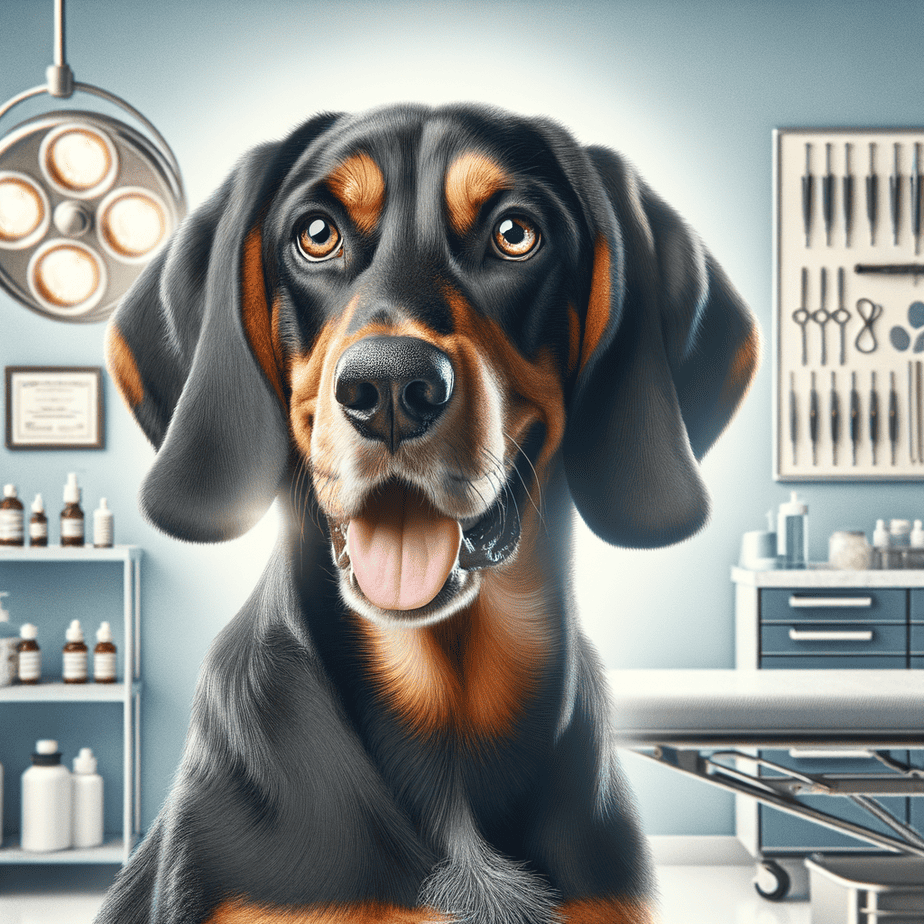
Prevention of Eye Problems
Ensuring your Black and Tan Coonhound gets the right nutrients for optimal eye health is essential for maintaining clear vision and preventing age-related issues. Natural, nutrient-rich foods and supplements can play a key role in supporting their eyesight. From vitamin A-packed freeze-dried liver treats to antioxidant-rich blueberries and targeted supplements like Eyeplex by Standard Process, there are several ways to nourish your dog’s eyes. In this section, we’ll explore how these powerful ingredients contribute to long-term vision health and overall well-being.
Eyeplex by Standard Process
Eyeplex by Standard Process is a specialized supplement designed to support your Black and Tan Coonhound’s eye health with a blend of essential nutrients. Formulated with key vitamins, minerals, and antioxidants, Eyeplex helps protect against oxidative stress, supports retinal function, and promotes overall vision health. Ingredients like vitamin A, vitamin C, and zinc contribute to maintaining strong eyesight, while whole food ingredients provide additional phytonutrients for cellular protection. Adding Eyeplex to your Black and Tan Coonhound’s diet can be especially beneficial for aging dogs or breeds prone to eye conditions, offering targeted nutritional support to keep their vision sharp and healthy for years to come.
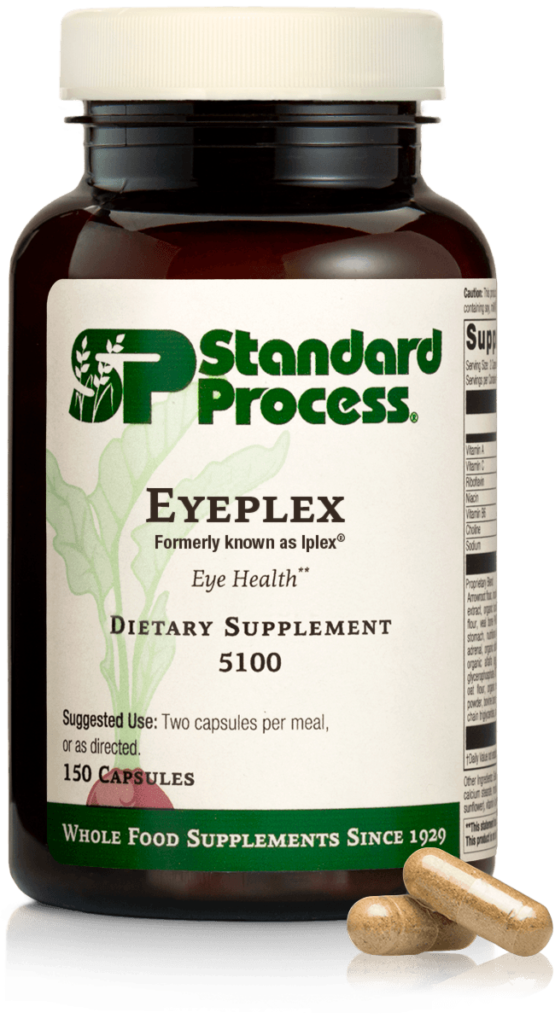
Freeze-Dried Blueberries
Freeze-dried blueberries are a powerhouse of antioxidants that can help protect your Black and Tan Coonhound’s eyes from oxidative stress and age-related damage. Rich in vitamins C and E, as well as anthocyanins, these tiny but mighty berries help combat free radicals that can contribute to eye diseases like cataracts and macular degeneration. Incorporating freeze-dried blueberries into your dog’s diet provides a natural and delicious way to support retinal health, reduce inflammation, and promote overall vision longevity. Plus, they’re a low-calorie, dog-friendly treat that makes a great addition to a balanced diet for long-term eye health.
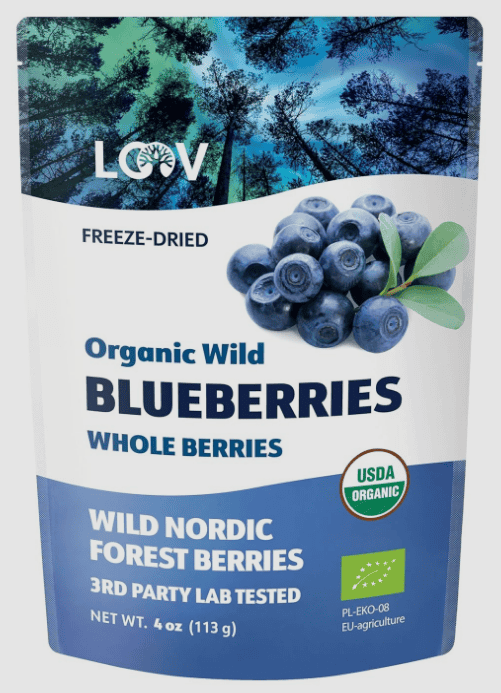
Freeze-Dried Liver
Freeze-dried liver treats are an excellent natural source of vitamin A, an essential nutrient for your Black and Tan Coonhound’s eye health. Vitamin A plays a crucial role in maintaining good vision, especially in low-light conditions, while also supporting overall immune function and skin health. Since liver is rich in bioavailable vitamin A, incorporating freeze-dried liver treats into your dog’s diet provides a convenient and nutritious way to promote optimal eye function. Just be sure to feed them in moderation, as excessive vitamin A can lead to toxicity. Adding these nutrient-packed treats to your pup’s routine is a simple, tasty way to support their long-term vision and well-being!
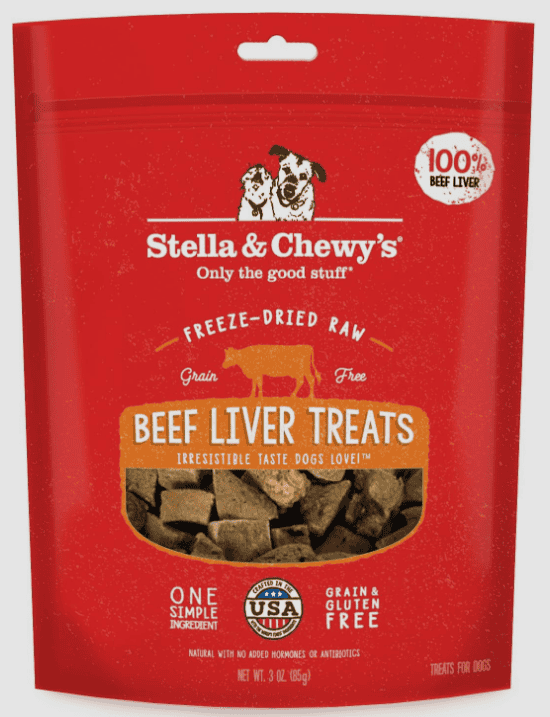
By prioritizing your Black and Tan Coonhound’s eye health through a balanced diet and nutritional supplements, you can help prevent many common eye issues. These simple steps can go a long way in ensuring your pup’s eyes stay healthy and clear for years to come.
In summary, a balanced diet and appropriate nutritional supplements can play a significant role in preventing eye issues in your Black and Tan Coonhound. And remember, prevention is always better than cure!
When it comes to maintaining your Black and Tan Coonhound’s eye health, environmental hygiene plays a crucial role. You can take several measures to create a safe and clean environment that will help reduce the risk of eye problems.
Indoor Air Quality
Indoor air quality is one of the most overlooked factors that can significantly affect your Coonhound’s eye health. Poor indoor air quality can lead to various eye conditions such as dry eye, conjunctivitis, and other irritations.
- Keep your home well-ventilated: Regularly open windows to allow fresh air in and circulate around your home. This can help reduce the concentration of airborne irritants.
- Use air purifiers: Air purifiers can help remove dust, dander, and other pollutants from the air that may irritate your dog’s eyes.
- Regular cleaning: Regularly vacuum and dust your home to reduce the amount of dust and dander in the air.
Sprays, Diffusers, Candles, Incense
Products such as sprays, diffusers, candles, and incense can also affect your Black and Tan Coonhound’s eye health. While these products can make your home smell great, they can also release irritants into the air that can cause eye problems for your pet.
- Avoid using aerosol sprays: Aerosol sprays can irritate your dog’s eyes. If you must use them, do so in a different room or when your dog is not in the house.
- Be cautious with diffusers and candles: Essential oils used in diffusers can be harmful to dogs if they are not dog-safe. Similarly, some candles produce smoke and soot that can irritate your dog’s eyes. Opt for dog-safe alternatives or use these products sparingly.
- Steer clear of incense: Incense produces smoke that can irritate your dog’s eyes. It’s best to avoid using it in your home.
Remember, a clean and safe environment is key to maintaining your Black and Tan Coonhound’s eye health. By taking these steps, you can help prevent eye problems and ensure that your furry friend stays healthy and happy.
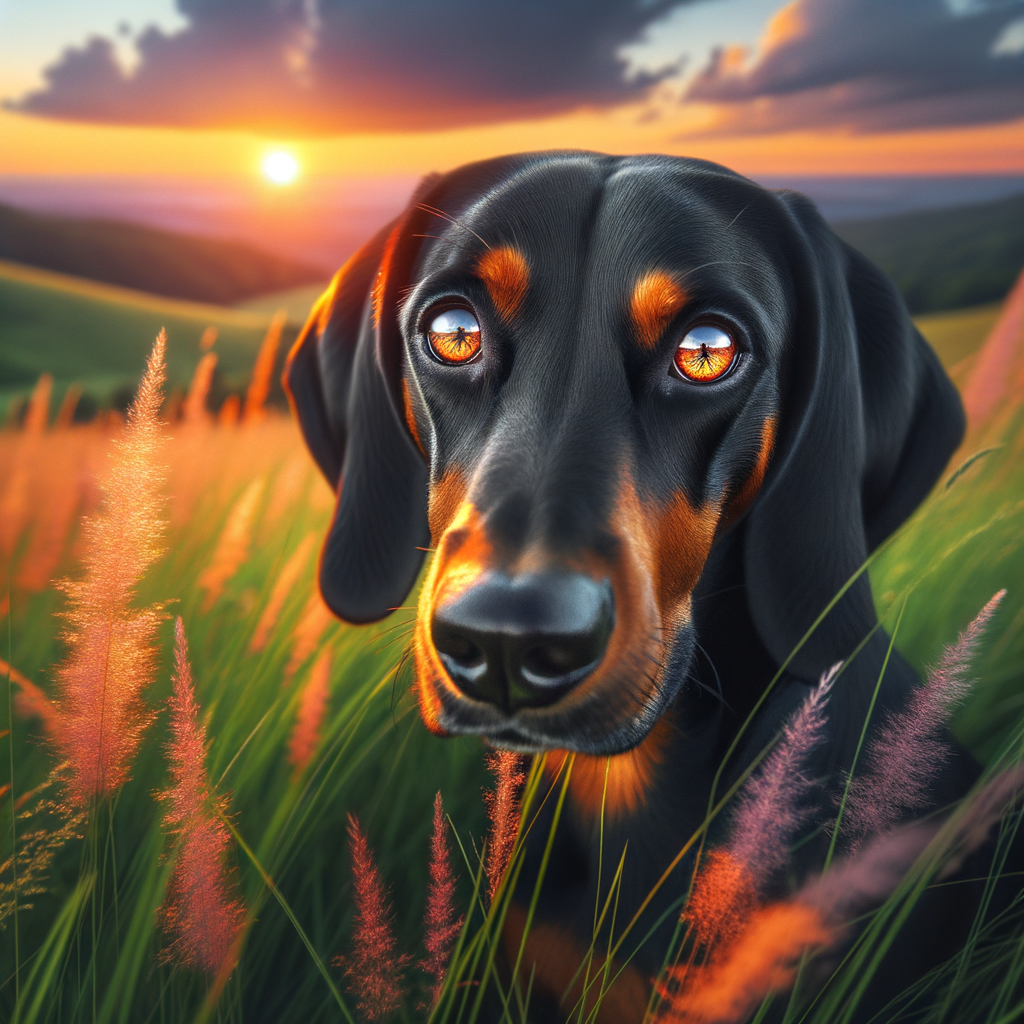
Routine Black and Tan Coonhound Eye Care & Maintenance
Ensuring your Black and Tan Coonhound’s eye health goes beyond diet and environmental factors. A routine eye care and maintenance regimen is crucial to keep their eyes in optimal condition. Let’s delve into what this routine care entails.
Daily & Weekly Care & Maintenance
On a daily basis, it’s important to examine your dog’s eyes for any signs of redness, swelling, or discharge, which could indicate an infection or other eye problem. If you notice any changes, it’s best to consult your vet immediately.
Weekly, you should clean your Coonhound’s eyes gently with a soft, damp cloth. This will help remove any dust, dirt, or debris that could potentially cause irritation or infection. Use a separate cloth for each eye to avoid cross-contamination.
Additionally, it’s a good idea to use dog-friendly eye wipes or a canine eye wash solution for regular cleaning. These products are specifically designed to be safe and soothing for your dog’s eyes.
Monitor Hair Length, Nail Length, Bath Frequency
Keeping your Black and Tan Coonhound well-groomed is also essential for their eye health. Long hair can easily get into their eyes, causing irritation or even scratches on the cornea. Regularly trimming the hair around their eyes can help prevent these issues.
Similarly, long nails can pose a risk if your dog scratches their eye. Regular nail trims can keep this from happening.
Bathing your dog regularly can also help maintain their eye health. It removes allergens and particles that could irritate their eyes. However, it’s important to avoid getting soap or shampoo in their eyes as this can cause irritation. Instead, use a wet cloth to carefully clean the area around their eyes.
Remember, maintaining your Black and Tan Coonhound’s eye health should be a priority in your routine care. With these steps, you can help prevent common eye problems and ensure your furry friend’s eyes stay healthy and bright.
Frequently Asked Questions
1. What are common eye health conditions in Black and Tan Coonhounds?
Black and Tan Coonhounds are prone to several eye health conditions, including cataracts, progressive retinal atrophy (PRA), and cherry eye.
2. How can I identify if my Black and Tan Coonhound has an eye health problem?
Look out for symptoms such as redness, discharge, excessive tearing, cloudiness, squinting, or changes in your dog’s behavior related to their eyes. If you notice any of these signs, it’s important to consult a veterinarian.
3. Can eye health conditions in Black and Tan Coonhounds be treated?
Many eye health conditions in Black and Tan Coonhounds can be managed or treated with proper veterinary care. However, the specific treatment will depend on the diagnosed condition and its severity.
4. How can I prevent eye health issues in my Black and Tan Coonhound?
Regular veterinary check-ups, maintaining good hygiene around the eyes, and avoiding exposure to irritants or trauma can help prevent some eye health issues. Additionally, breeding from dogs with a history of good eye health can reduce the risk of hereditary conditions.
